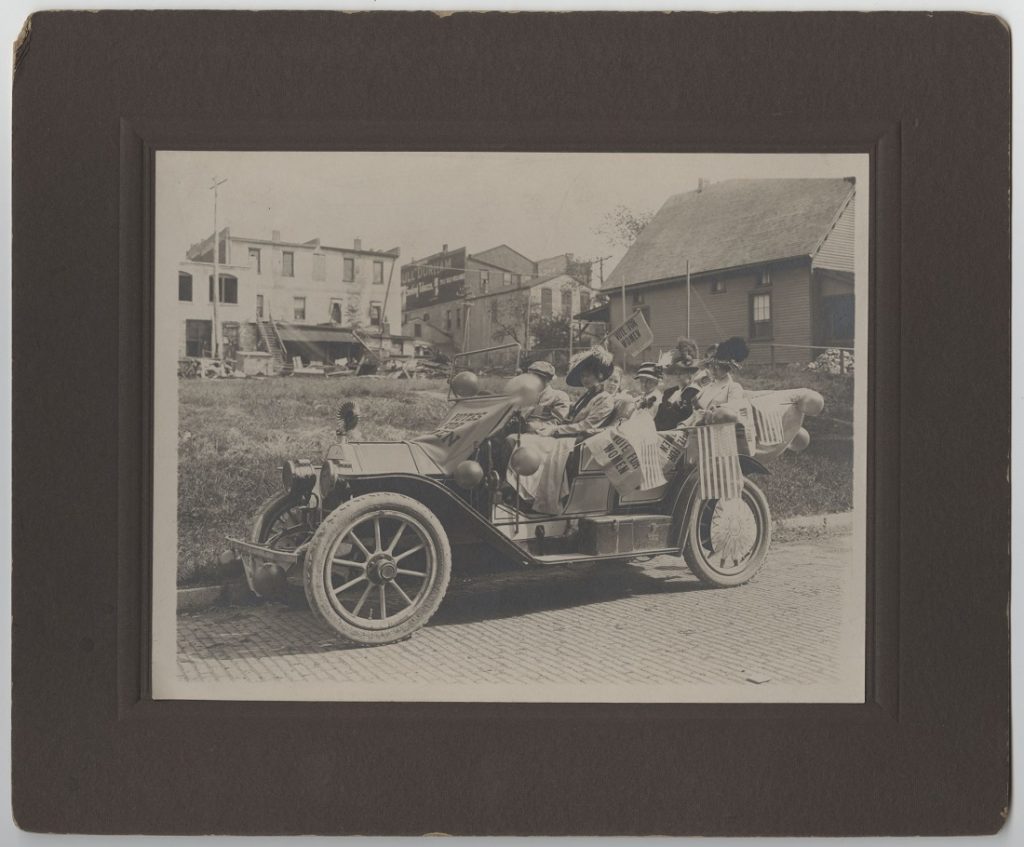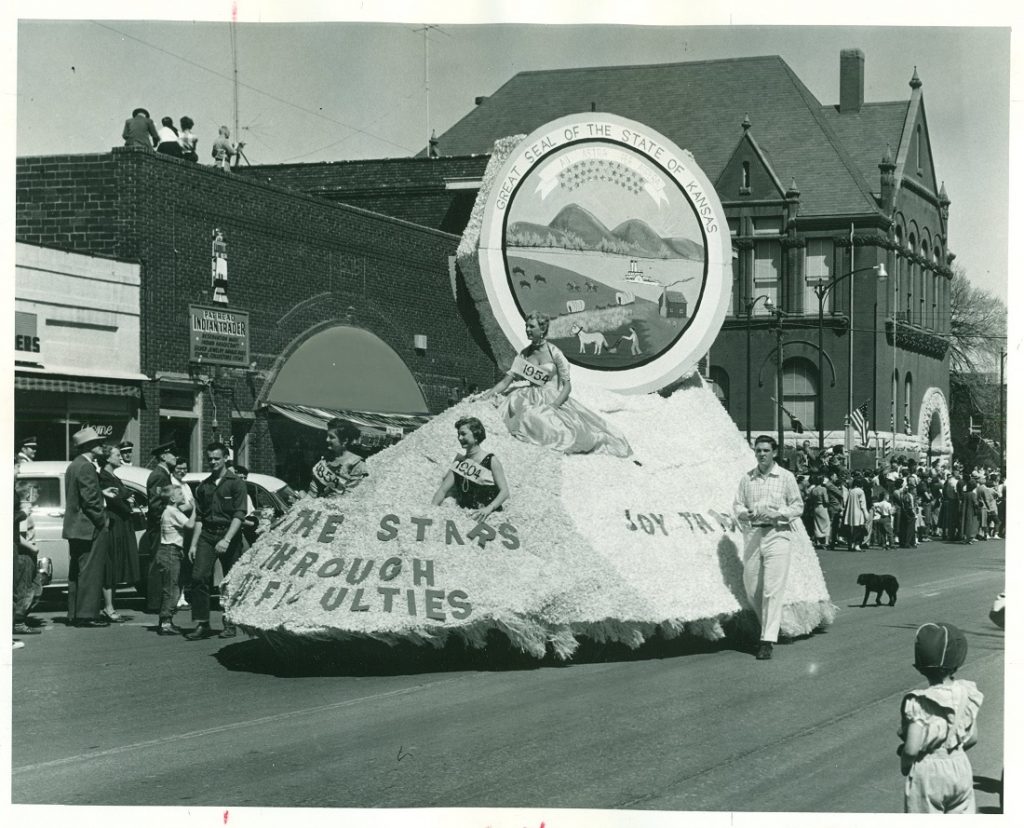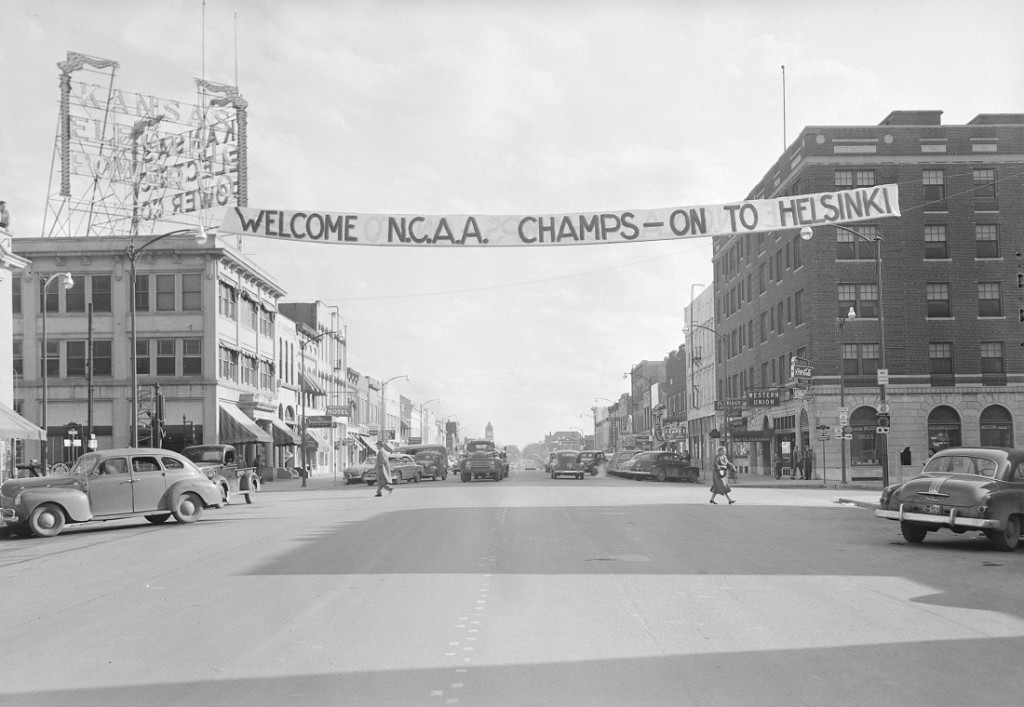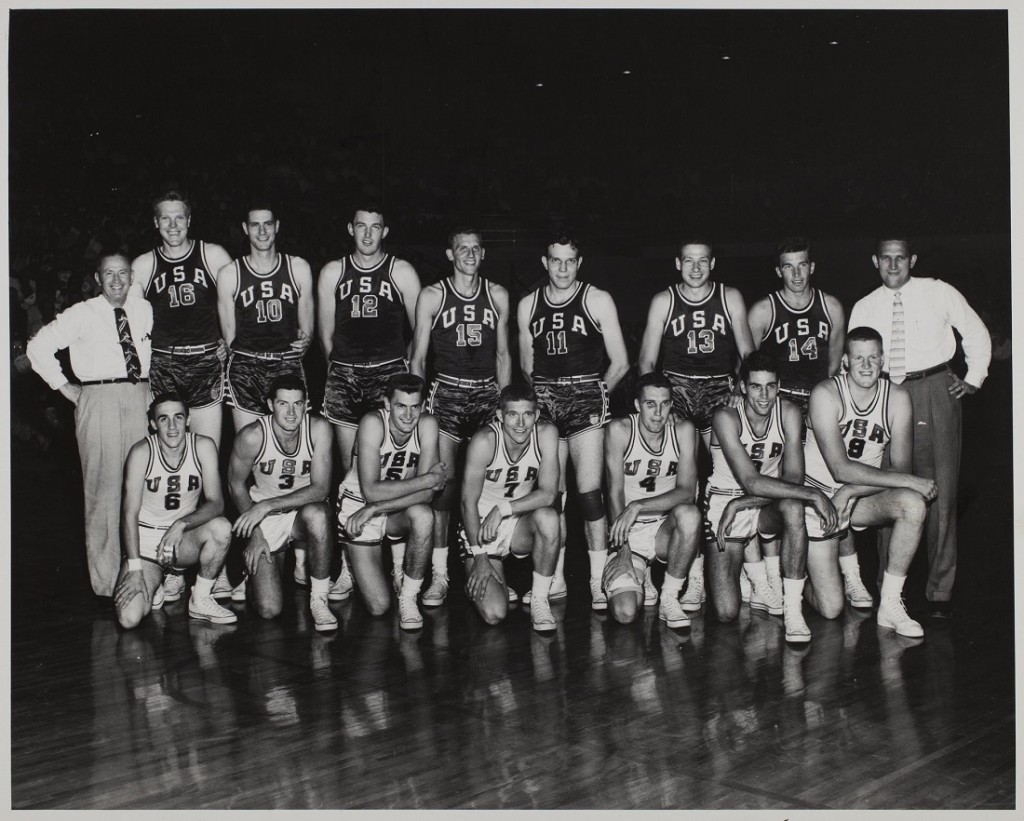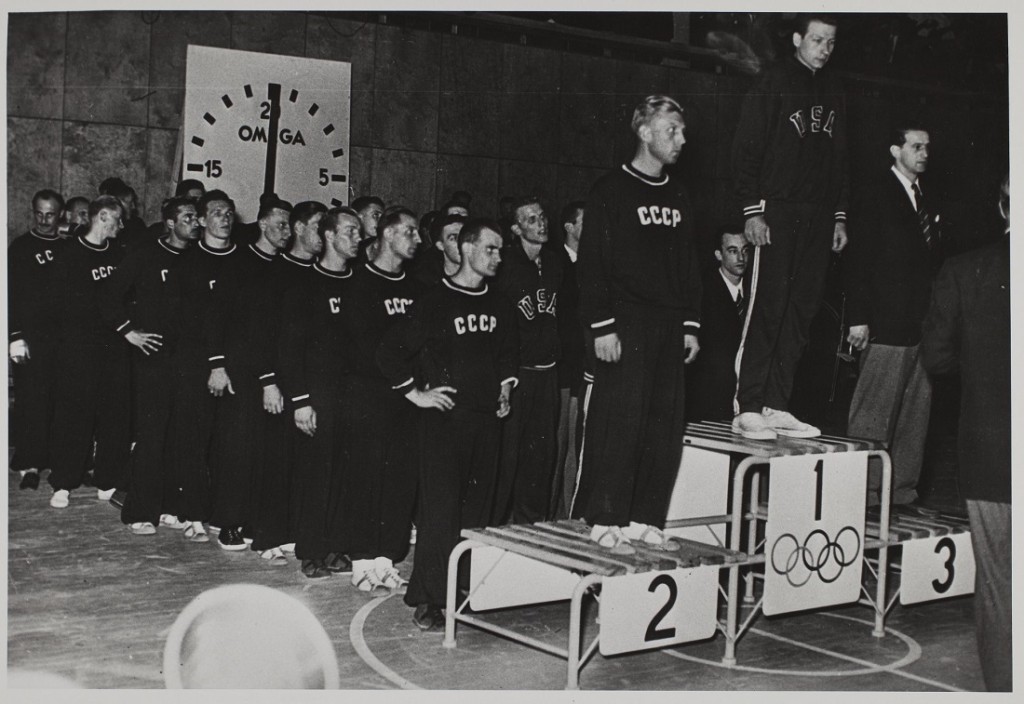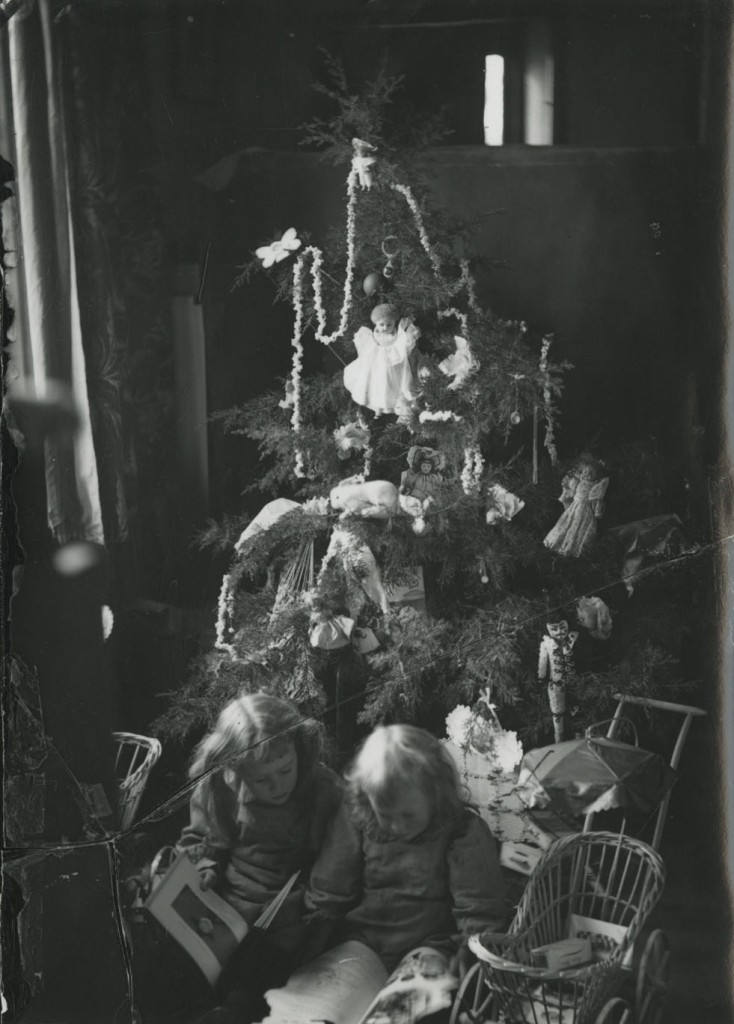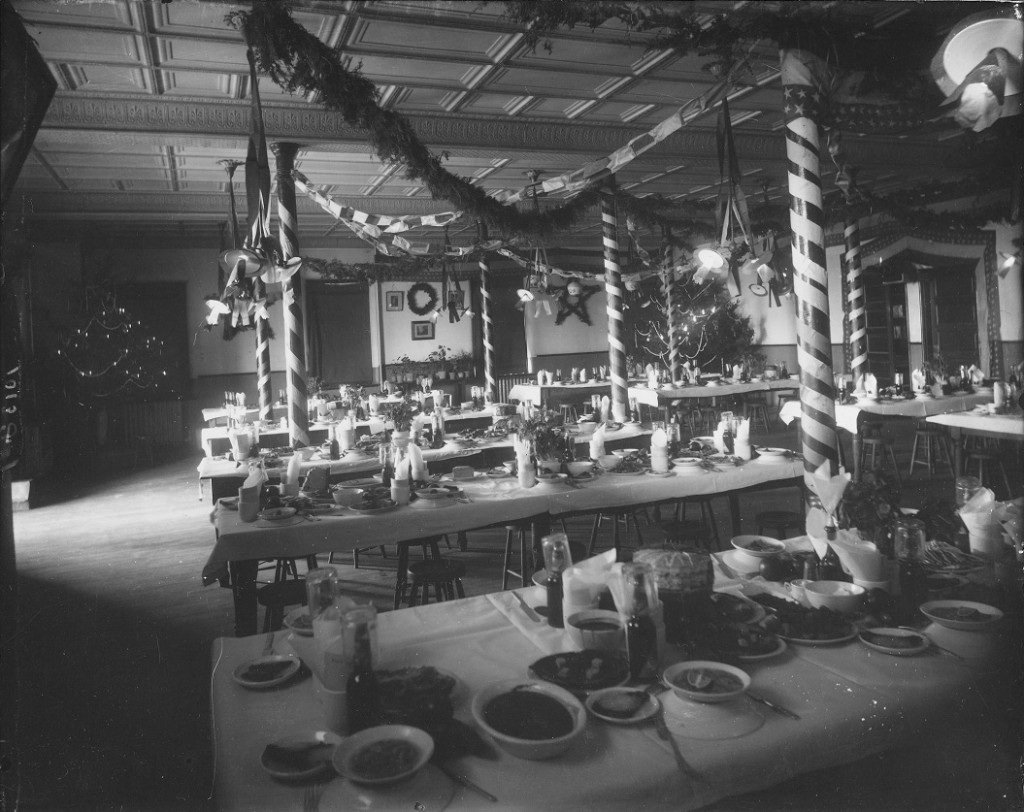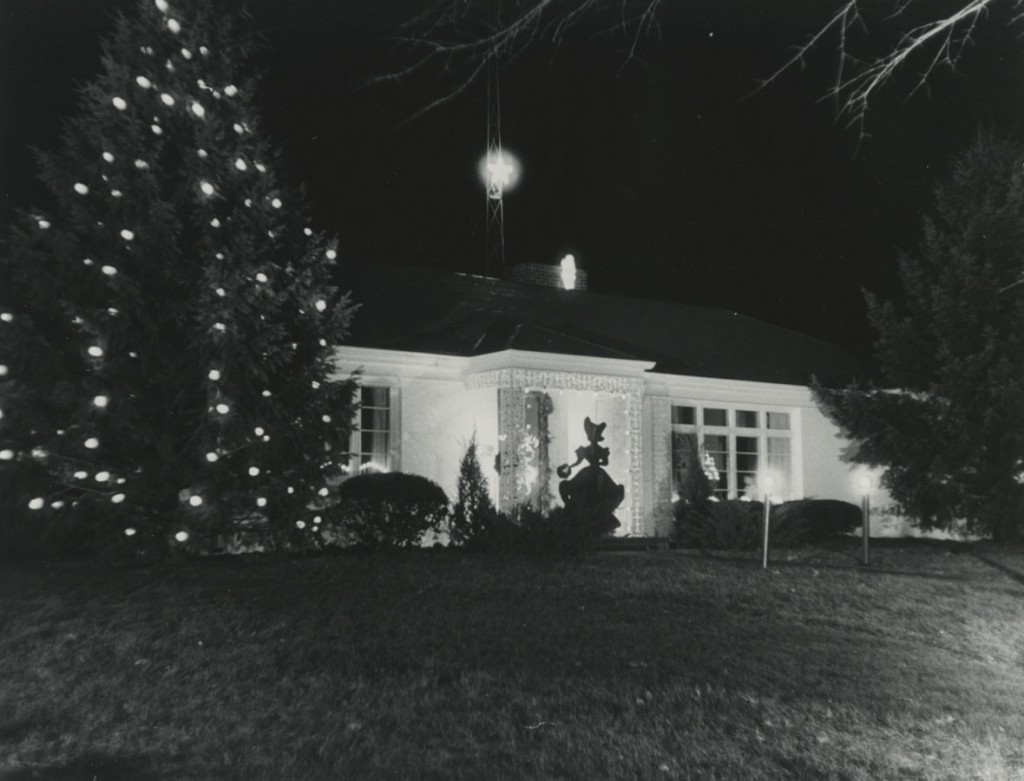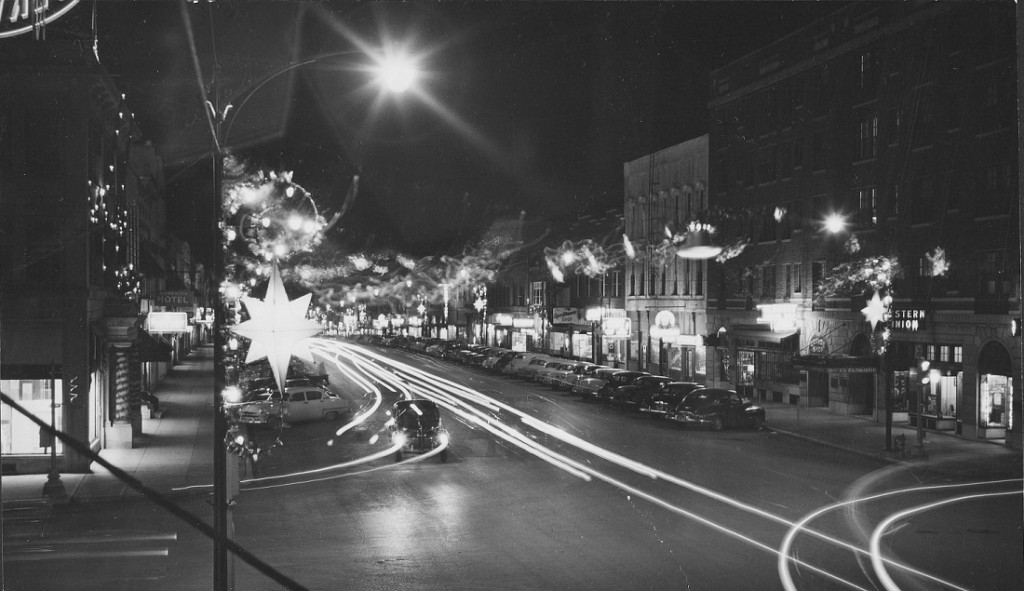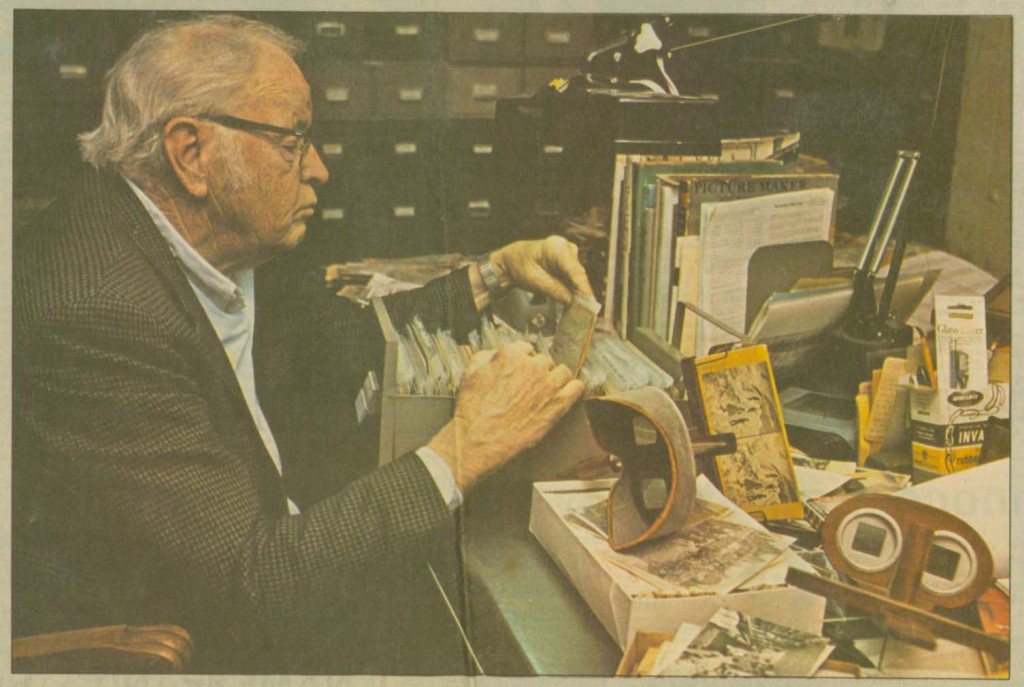
George Allen with his collection, December 1989.
Lawrence Journal-World Photo. George Allen Photograph Collection
accession file. Click image to enlarge.
George Allen (1913-2007) was born in Wichita, Kansas. His family moved to Lawrence in 1927. He graduated from Liberty Memorial High School, and then earned a law degree from Kansas University. He practiced law in Lawrence for forty years. Mr. Allen also collected stereoviews, a hobby fueled by his love of history and an interest in photography. He bought his first stereoview in the 1950s from a woman who operated an antique shop behind her house. He would go on to spend thirty-five years collecting thousands more, with his collection peaking somewhere between 20,000 and 25,000. In 1990 he sold 722 stereoviews to the University of Kansas Libraries. Among the collection are views of Kansas, Arizona, Illinois, Nebraska, New Mexico, North Dakota, Ohio, Pennsylvania, Texas, Missouri, Dakota Territory, as well as images of cowboys, sod homes, coal mining, floods, cattle raising, the Chicago Exposition of 1874, and railroads.
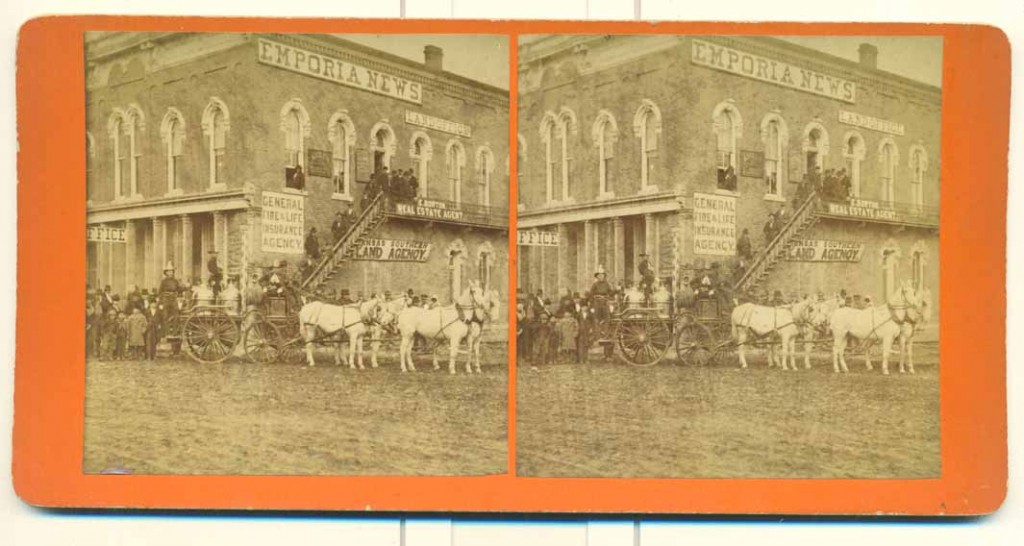
Emporia News building on Commercial Street, Emporia, Kansas, undated.
George Allen Photograph Collection. Call Number: RH PH 137.
Click image to enlarge.
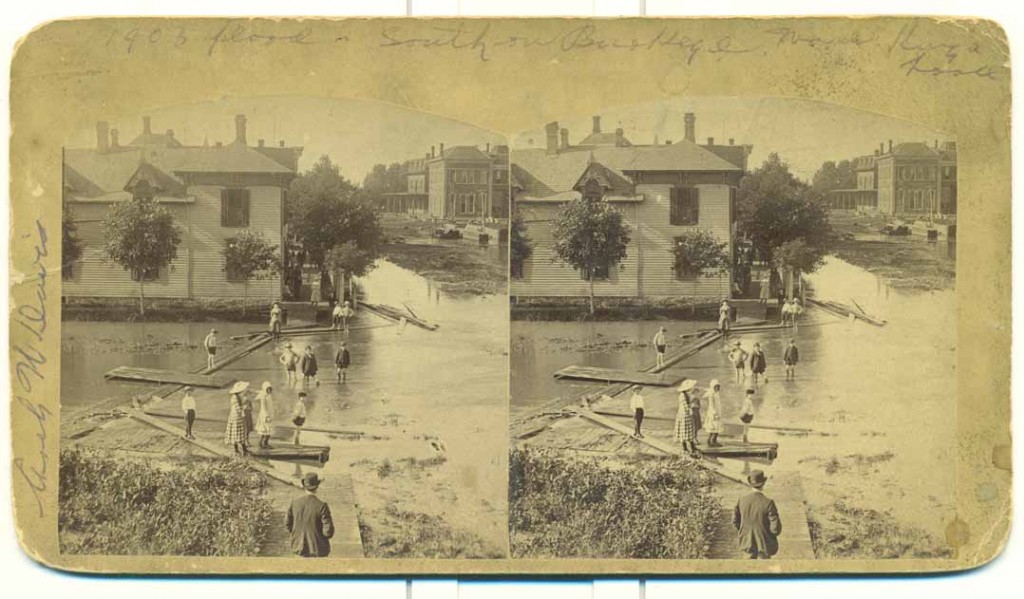
Flood in Abilene, Kansas, 1903. George Allen Photograph Collection.
Call Number: RH PH 137. Click image to enlarge.
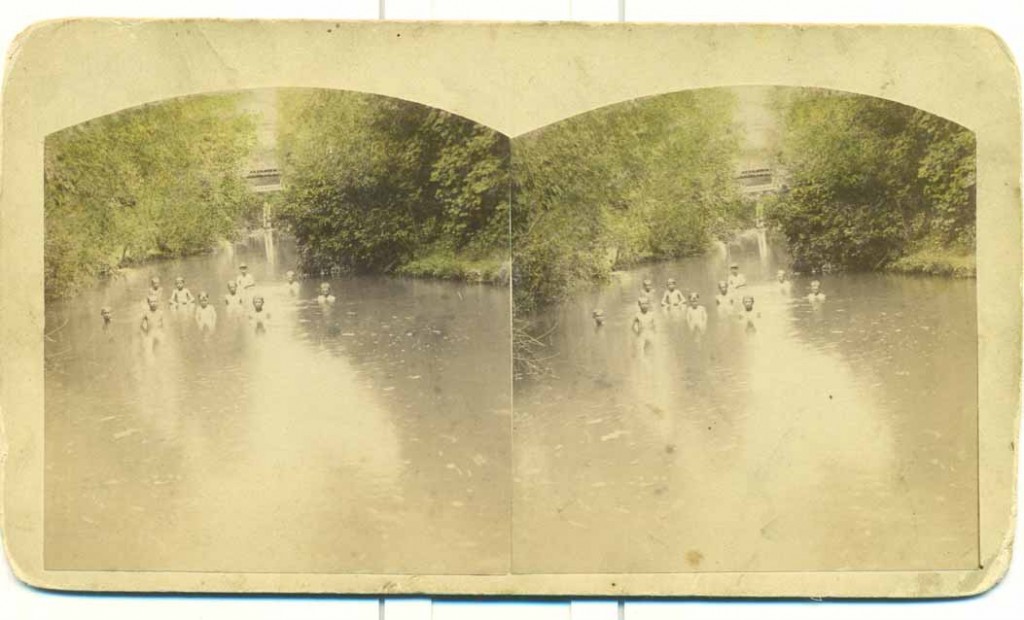
Boys bathing in Mud Creek, Dickinson County, Kansas, undated.
George Allen Photograph Collection. Call Number: RH PH 137.
Click image to enlarge.
The most popular stereoviews from Mr. Allen’s collection are fifty-five from Alexander Gardner’s “Across the Continent on the Union Pacific Railway, Eastern Division” series, which include several images of post-Civil War Lawrence, Kansas. Gardner, working for the Union Pacific Railway, took his photography wagon, loaded with chemicals and glass plates, across the west in 1867. He first followed the existing railroad line, which passed through Kansas, and then he continued along the proposed railroad route to the Pacific Ocean. He documented the towns, landscapes, and people he encountered on the way, using stereoviews to do so.
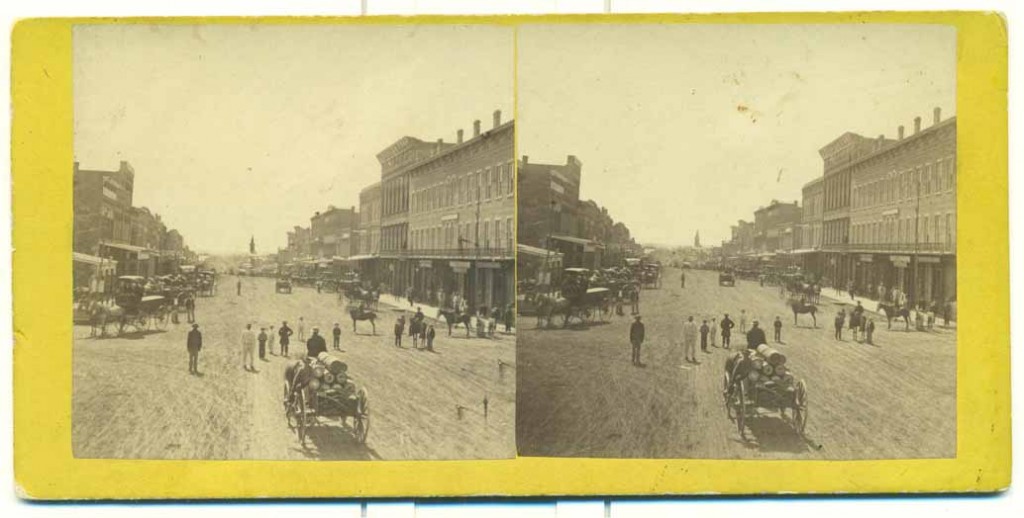
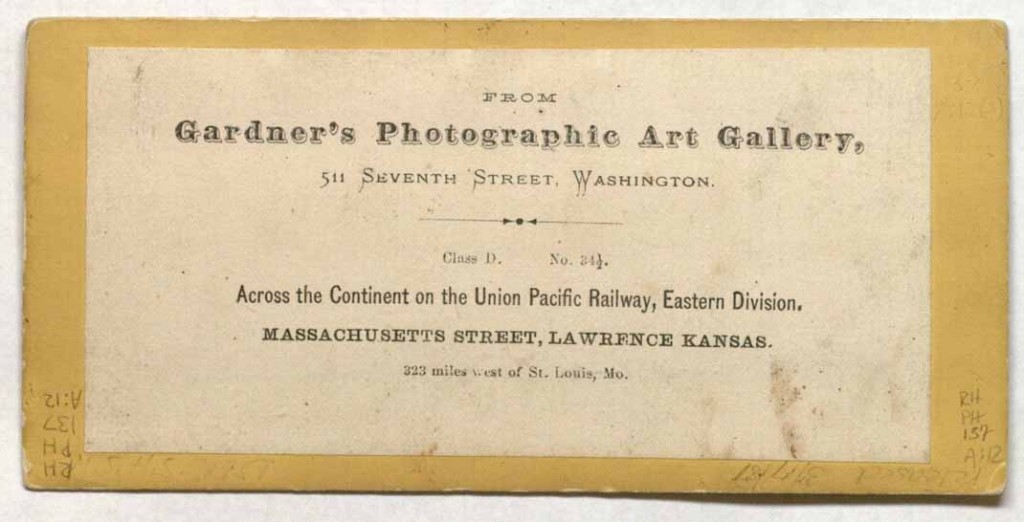
Massachusetts Street, Lawrence, Kansas, 1867 (front and back of card).
The image shows the rebirth of the town within five years of Quantrill’s Raid.
Alexander Gardner, Across the Continent on the Union Pacific Railway, Eastern Division.
George Allen Photograph Collection. Call Number: RH PH 137.
Click images to enlarge.
Stereoscopic photography consists of two nearly identical images pasted on a board, side by side. To get the two images, the photographer would make an exposure, then move the camera 2 1/2 inches, the average distance between human eyes, and make a second exposure. The photographer would then develop each of the images and paste the prints onto the board. When the two images are viewed through an apparatus called a stereoscope, or stereoviewer, the eyes force the two images into one image, creating the appearance of depth perception, or 3D. Another method was to use a twin-lens camera, which allowed the photographer to make the two exposures simultaneously, saving time and eliminating the need to reload the camera.
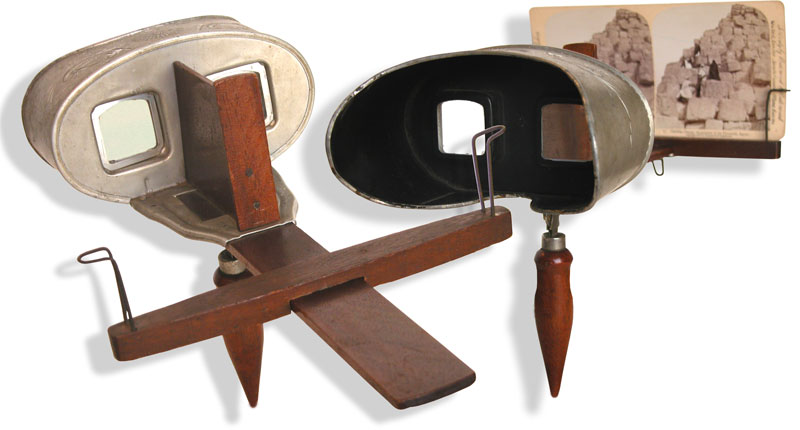
An example of a stereoviewer, also known as a stereoscope.
Image courtesy of Gilai Collectibles. Click image to enlarge.
Collecting and trading stereoviews of plays, famous sites, people, or events was quite popular in the mid nineteenth and early twentieth centuries. Most homes had a stereoviewer in the parlor, which allowed viewers to see, for example, views of Paris without actually traveling. Mr. Allen enjoyed stereoviews for the way they portrayed history and told the story of our shared past.
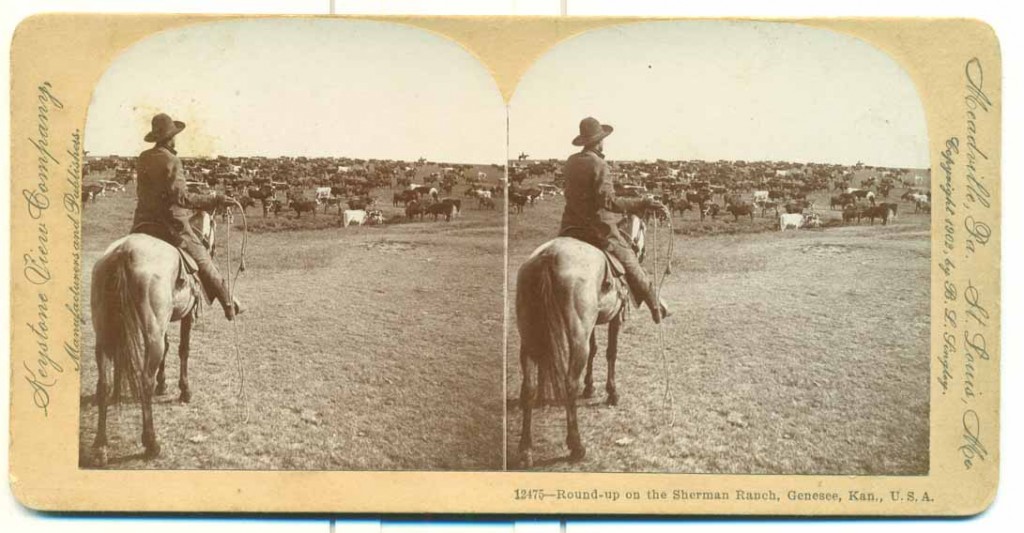

Round-up on the Sherman Ranch, Genesee, Kansas, undated (front and back of card).
George Allen Photograph Collection. Call Number: RH PH 137. Click images to enlarge.

Dugout sod home, Kansas, undated. George Allen Photograph Collection.
Call Number: RH PH 137. Click image to enlarge.
Kathy Lafferty
Public Services

